*(restored/expanded)

‘Among the most widely seen photographs of Hollis Frampton is one of him as a young man, a self-portrait taken in 1959, if we are to trust the narration he composed to accompany its inclusion in his 1971 film (nostalgia). In the image, Frampton sits against a neutral backdrop, looking to his right, as if intently scrutinizing something just outside the frame. His shoulders press forward, suggesting that his unseen hands are resting crossed in his lap, and he sports a neat dark jacket and tie, their conservatism offset by a beatniky beard and hair that would have been considered longish in the 1950s, combed back into a Victorian wave. “As you see, I was thoroughly pleased with myself at the time, presumably for having survived to such ripeness and wisdom, since it was my twenty-third birthday,” the narrator says in (nostalgia). “I focused the camera, sat on a stool in front of it, and made the exposures by squeezing a rubber bulb with my right foot.”
‘When he took this photo, Frampton was working as an assistant in a commercial photography studio in New York, where he had moved the previous year, and was sharing an apartment with sculptor Carl Andre, who had been his high school classmate at Phillips Academy in Andover, Massachusetts (as had painter Frank Stella, with whom they would share studio space). Due to his dispute over the necessity of a required history course, Frampton had failed to graduate from Andover, thus forfeiting a scholarship to Harvard and instead attending Western Reserve College in Cleveland. While there, he struck up a correspondence with Ezra Pound, who was then a mental patient at St. Elizabeth’s Hospital in Washington, D.C. Frampton—who was writing poetry at the time—left Cleveland to move near Pound, visiting him daily in the hospital, while the older poet continued to compose The Cantos, his sprawling epic, dense with reference and allusion, which would remain unfinished at his demise. Pound’s high modernism would serve as a touchstone for Frampton, as would the parallel modernisms of Marcel Duchamp, Jorge Luis Borges, and James Joyce. Ironically, Frampton, too, would embark upon an ambitious, large-scale project—the proposed thirty-six-hour film cycle Magellan—that would be cut short by his death from cancer in 1984, at age forty-eight.
‘Another oft reproduced image of Frampton is entitled Portrait of Hollis Frampton by Marion Faller, Directed by H. F. It was taken in 1975 by Faller, the photographer with whom Frampton lived during the last thirteen years of his life. The picture shows him staring, eyes wide and pupils contracted, almost into the lens of the camera, his hands raised beside his head, palms outward. In the darkness, a horizontal slit of light draws a line across his eyes and onto the middle of both of his hands. His hair is wilder than at age twenty-three—the light beam illuminates shaggy bits jutting out from his temples—and his beard is fuller, now flecked with white. The setup cannily alludes to the mechanics of both photography and cinema, of light projected and recorded, but in its alien strangeness resembles a promotional still from a science-fiction movie. It almost appears as if the light is not so much being thrown on him as projected outward from his eyes and hands. In the earlier self-portrait, Frampton seems relatively staid, as if looking toward the past, trying to emulate an early twentieth-century poise. But here, at age thirty-nine, he stares as if into a vision, ready to walk forward into the unknown, ecstatic.
‘In the time between these two photographs, Frampton had established himself as one of the foremost members of the American avant-garde, part of a new generation of artists who came to fruition in the late 1960s, dramatically shifting the terms of both experimental film and the intellectual thinking on cinema as a whole. By the end of his career, he had completed close to one hundred films (including the individual one-minute Pans for Magellan) and numerous photographic series; helped establish the pioneering Digital Arts Laboratory at the Center for Media Study at the State University of New York at Buffalo in 1977; published Circles of Confusion: Film, Photography, Video—Texts 1968–1980, his influential collection of theoretical essays and other writings that had originally run in Artforum, October, and elsewhere; and been honored with retrospectives at the Walker Art Center in Minneapolis and the Museum of Modern Art in New York. At a time when many of his filmmaking colleagues still kept their distance from newer electronic media, he not only embraced and wrote about video but also delved into xerography and computer programming.
‘In standard histories of experimental cinema, Frampton’s work is usually considered part of “structural film,” a category invented by P. Adams Sitney in a 1969 essay that would later be revised into a chapter of his landmark 1974 study Visionary Film. Sitney coined the term to describe what he saw as a new tendency in the American avant-garde, typified by the films of Frampton as well as those of Michael Snow, George Landow, Tony Conrad, and others. “Theirs is a cinema of structure,” Sitney wrote, “in which the shape of the whole film is predetermined and simplified, and it is that shape that is the primal impression of the film”—a sharp divergence from the work of an older generation of filmmakers, including Maya Deren, Stan Brakhage, and Kenneth Anger, who, in his view, had progressed over time toward a greater internal complexity of form. He compared structural film to minimalism in the visual arts and serial composition in music, contemporaneous movements that likewise stressed formal reduction and repetition. Frampton, however, rejected Sitney’s periodization, denouncing “that incorrigible tendency to label, to make movements, [which] always has the same effect, and that effect is to render the work invisible.”
‘Nevertheless, Frampton did agree that a new sensibility was afoot. Describing his own development, he recalled that “there was something called the [Film-Makers’] Cinematheque in New York, which became a kind of hangout. I met other people who were trying to make films: Joyce Wieland, Michael Snow, Ken Jacobs, Ernie Gehr after a while, although he was somewhat younger. Later on, Paul Sharits, who was at the time living in Baltimore.” These are all figures whose work Sitney classified under structural filmmaking, but Frampton saw their shared project as a more expansive one. “There existed at least for a time, and that time lasted for some years in New York City, a kind of constant contact between us. One might almost—almost—venture to call it a sense of being united in some way, probably by the conviction that there should be good films. Preferably, films so good they hadn’t been made yet. That the intellectual space open to film had not entirely been preempted.”
‘Regardless of Frampton’s distaste for labels, one can productively think about his films in terms of a simplification of elements in favor of an overall, predetermined shape. This is particularly so in his earliest surviving works, from Information (1966) to Zorns Lemma (1970). In this phase of his filmmaking, Frampton was interested in taking apart cinema by reducing it to its most basic, constitutive parts—sound, image, movement, editing—and then using these elements to construct films whose unfolding takes on the quality of a mathematical formula or puzzle. Later in his career, he would describe his concerns during this formative period as the “rationalization of the history of film art. Resynthesis of the film tradition: ‘making film over as it should have been’” and the “establishment of progressively more complex a priori schemes to generate the various parameters of filmmaking.” His play with the possible relationships between sound and image in works like Maxwell’s Demon (1968), Surface Tension (1968), and Carrots & Peas (1969) would culminate in the abecedarian structure of Zorns Lemma. The films’ titles alone convey his interest in importing concepts from the sciences into art, though never in a straightforward way; he once said, “I’m a spectator of mathematics like others are spectators of soccer or pornography.” His goal was a more epistemological one. “Eventually,” he would later write, “we may come to visualize an intellectual space in which the systems of words and images will both, as [filmmaker, poet, and founder of New York’s Anthology Film Archives] Jonas Mekas once said of semiology, ‘seem like half of something,’ a universe in which image and word, each resolving the contradictions inherent in the other, will constitute the system of consciousness.”
‘To speak of Frampton’s films as merely structural riddles or philosophical proposals, however, fails to take into account their pleasurable and poetic nature. The gamelike qualities of his films prove playful rather than didactic and always retain a residue of enigma. And he is more of a storyteller than the structural label would suggest. His films are told with an erudite wit, an often stark beauty, and deep emotional resonance. This last quality is one that sets him apart from many of his “structural” fellow travelers and is most apparent in his only completed film cycle, Hapax Legomena (1971–72), a seven-part sequence including three of his best-known works, (nostalgia), Poetic Justice (1972), and Critical Mass (1971). Throughout the cycle, Frampton continually reveals intricate relationships between time and memory, word and image. He called the project “an oblique autobiography, seen in stereoscopic focus with the phylogeny of film art as I have tried to recapitulate it during my own fitful development as a filmmaker.” This aspect is most explicit in (nostalgia) but is also evident, in a more buried way, in Critical Mass, which creates hypnotic rhythms from footage of a woman and a man engaged in a heated argument—completed when Frampton was working through the tumultuous end of a six-year marriage.
‘The “phylogeny of film art” that Frampton mentions relates to a further concept underpinning his work as a whole, what he called a “metahistory” of cinema, by which he meant the creation of a specific body of films that would serve as an instructive metaphor for the whole history of film. “The history of cinema consists precisely of every film that has ever been made, for any purpose whatsoever,” he wrote. “The metahistorian of cinema, on the other hand, is occupied with inventing a tradition, that is, a coherent, wieldy set of discrete monuments, meant to inseminate resonant consistency into the growing body of his art. Such works may not exist, and then it is his duty to make them.” His unfinished Magellan project would have been his fullest realization of this concept. Planned around the conceit of Ferdinand Magellan’s global circumnavigation, it was to comprise a liturgical calendar of more than eight hundred films, with Lumière-inspired miniatures on most days and longer works on equinoxes, solstices, and other special dates. Within this solar epic, Frampton envisioned numerous “subsections and epicycles,” completing a macrocosmic engine reminiscent of an astrolabe’s nested gears or a computer program’s subroutines—the latter suggested by Frampton’s dot-matrix-printed schedule from 1978, “CLNDR version 1.2.0,” with each day numbered like a line of code.
‘As Magellan’s algorithmic aspects illustrate, Frampton was concerned not only with cinema’s history but its future as well. In numerous writings, he conjectured that the technology of film had already reached its point of obsolescence, pinpointing this moment at the invention of radar, rather than the more obvious rise of television. The machine age apparatus created by the Lumières and Edison would someday be seen as merely an early phase of an as-yet-unnamed technology of moving-image-making that he would variously term “the camera arts” or “film and its successors” or “photograph-film-video-computer.” And this system was, in turn, an outgrowth of much older forms, like painting and music. He suggested that cinema would endure past its death, albeit transmuted, through this larger trajectory.
‘Or to put it another way, as Frampton did in his notes on Gloria! (1979), a work dedicated to his grandmother: “The last time I saw my grandmother, she said to me: ‘We just barely learn how to live, and then we’re ready to die.’” The film, however, depicts a story based on the ballad “Finnegan’s Wake,” wherein a dead body rises from its casket to dance at its own funeral. Surely, Frampton would have found wry amusement in this collection of his work, which replicates his films via encrypted lines of code and releases them back into the world as digital ghosts.’ — Ed Halter
____
Stills
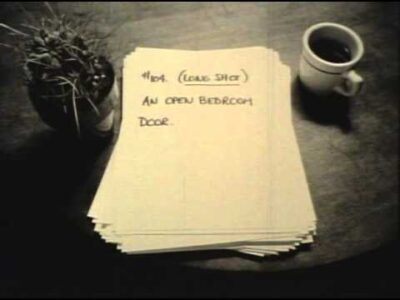
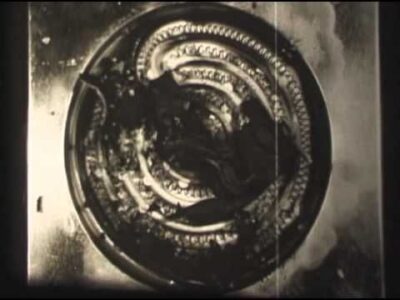

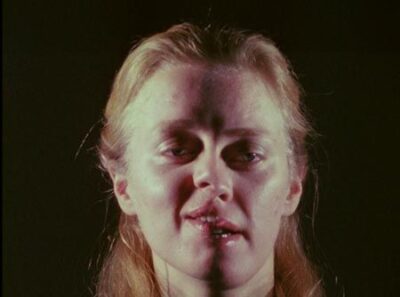


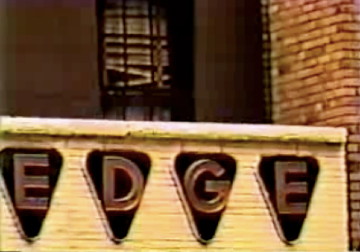

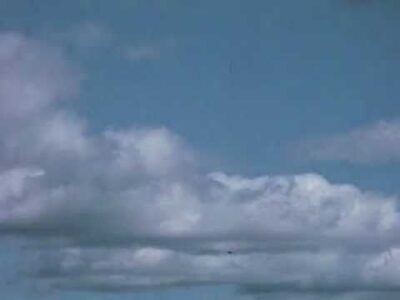




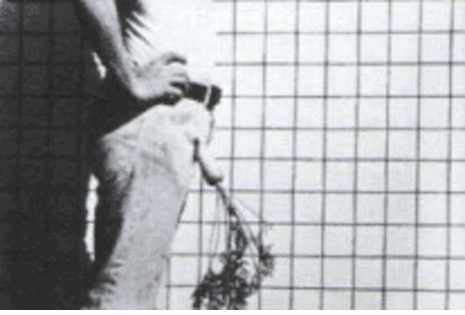
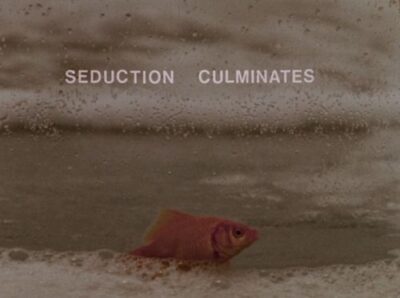
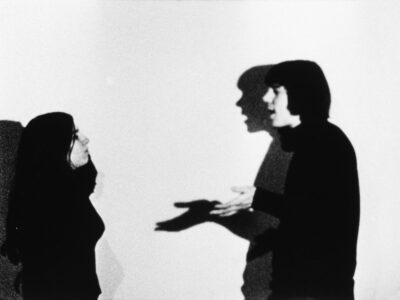
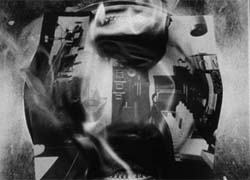
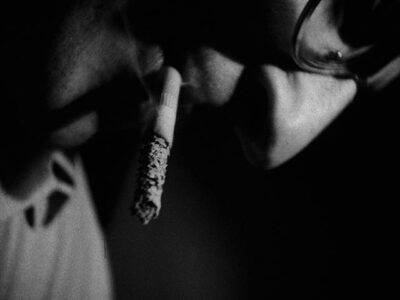

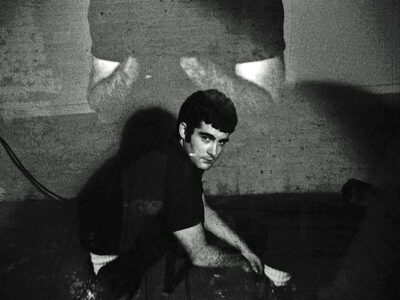
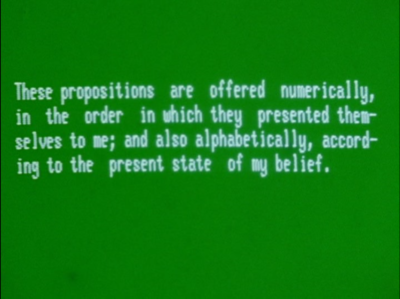


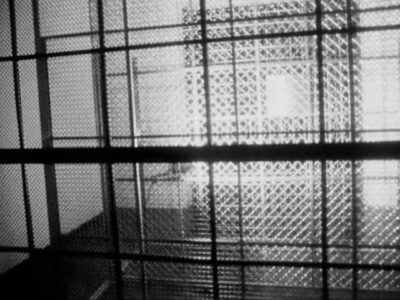
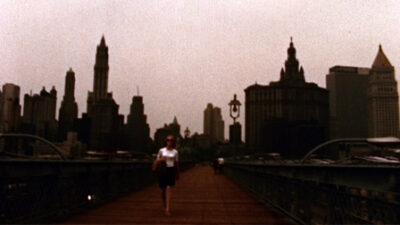

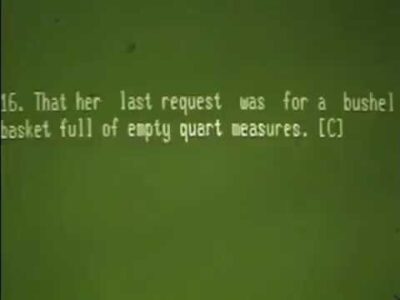
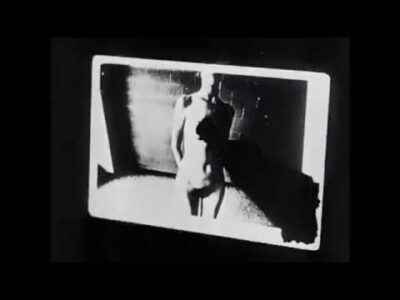






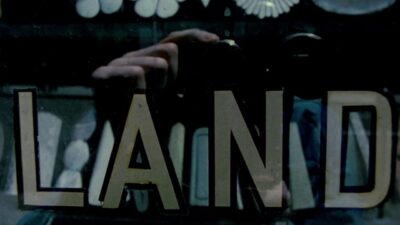
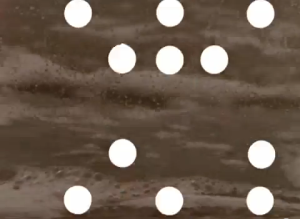


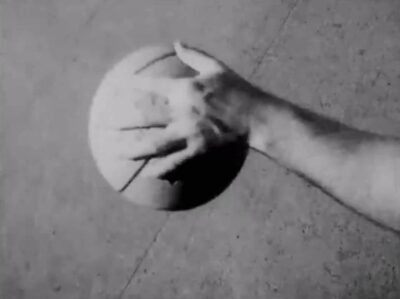

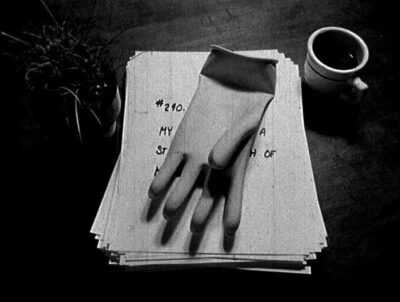

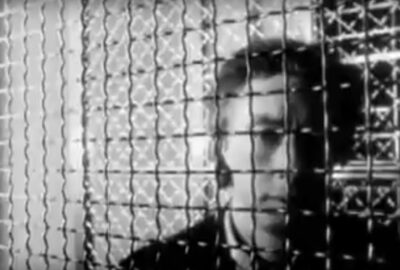
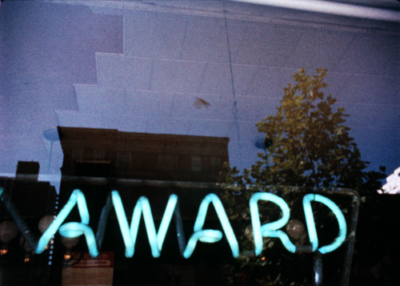
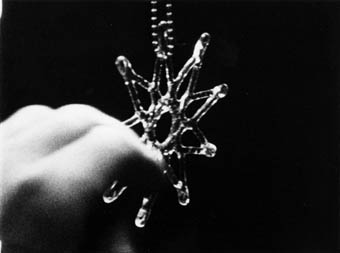

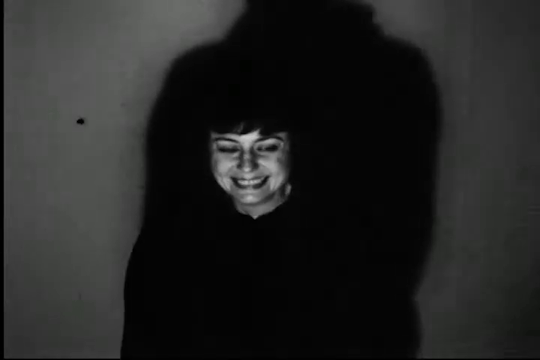


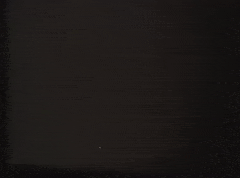

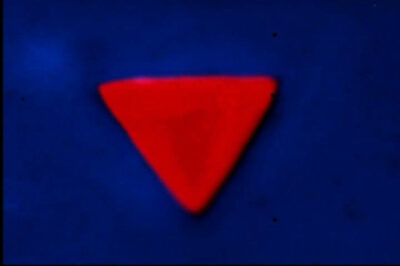
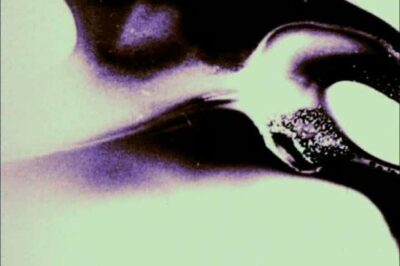





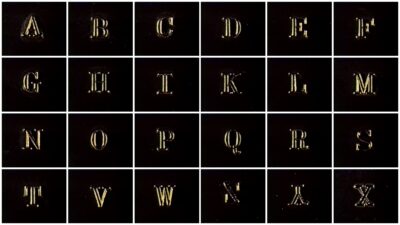

_____
Further
Hollis Frampton Website
Hollis Frampton @ IMDb
A Hollis Frampton Odyssey @ The Criterion Collection
Hollis Frampton’s Lemon Analysis— The Nature of Film and Vision
Hollis Frampton ou le hors-champ du cinéma : le projet Magellan
A Hollis Frampton Odyssey reviewed @ Slant
Exploded View | Hollis Frampton’s Critical Mass
Pattern Recognition: The Writings of Hollis Frampton
Video: Hollis Frampton interviewed
He’s Got Rhythm: ‘A Hollis Frampton Odyssey’
A Keyboard Mind: Hollis Frampton’s Gloria! as Lyric Poem
The look of the thing: Hollis Frampton’s photography
Letters of Note: For Love and Honor
A Riddle in Temporality: Hollis Frampton’s Nostalgia
History and Ambivalence in Hollis Frampton’s Magellan
How Should Artists Be Paid?: Hollis Frampton’s Letter to MoMA and the Price Artists Pay for Autonomy
Hollis frampton UNE CONFÉRENCE
Hollis Frampton Revival
ON THE CAMERA ARTS AND CONSECUTIVE MATTERS: THE WRITINGS OF HOLLIS FRAMPTON
KERRY TRIBE RESTAGES HOLLIS FRAMPTON’S CRITICAL MASS
A Pentagram for Conjuring Hollis Frampton
hollis frampton | VISCER-ebr-AL – Objectively Speaking
____
Extras
A documentary on Hollis Frampton made in 1981.
Screening Room with Hollis Frampton – PREVIEW
Hollis Frampton at Chatham College 1971
Michael Snow on Hollis Frampton and Public Speaking
Hollis Frampton Panel
_______
A Lecture
by Hollis Frampton

Please turn out the lights.
As long as we’re going to talk about films, we might as well do it in the dark.
We have all been here before. By the time we are eighteen years old, say the statisticians, we have been here five hundred times.
No, not in this very room, but in this generic darkness, the only place left in our culture intended entirely for concentrated exercise of one, or at most two, of our senses.
We are, shall we say, comfortably seated. We may remove our shoes, if that will help us to remove our bodies. Failing that, the management permits us small oral distractions. The oral distractions concession is in the lobby.
So we are suspended in a null space, bringing with us a certain habit of the affections. We have come to do work that we enjoy. We have come to watch this.
The projector is turned on.
So and so many kilowatts of energy, spread over a few square yards of featureless white screen in the shape of a carefully standardized rectangle, three units high by four units wide.
The performance is flawless. The performer is a precision machine. It sits behind us, out of sight usually. Its range of action may be limited, but within that range it is, like an animal, infallible.
It reads, so to speak, from a score that is both the notation and the substance of the piece.
It can and does repeat the performance, endlessly, with utter exactitude.
Our rectangle of white light is eternal. Only we come and go; we say: This is where I came in. The rectangle was here before we came, and it will be here after we have gone.
So it seems that a film is, first, a confined space, at which you and I, we, a great many people, are staring.
It is only a rectangle of white light. But it is all films. We can never see more within our rectangle, only less.
A red filter is placed before the lens at the word “red.”
If we were seeing a film that is red, if it were only a film of the color red, would we not be seeing more?
No.
A red film would subtract green and blue from the white light of our rectangle.
So if we do not like this particular film, we should not say: There is not enough here, I want to see more. We should say: There is too much here, I want to see less.
The red filter is withdrawn.
Our white rectangle is not “nothing at all.” In fact, it is, in the end, all we have. That is one of the limits of the art of film.
So if we want to see what we call more, which is actually less, we must devise ways of subtracting, of removing, one thing and another, more or less, from our white rectangle.
The rectangle is generated by our performer, the projector, so whatever we devise must fit into it.
Then the art of making films consists in devising things to put into our projector.
The simplest thing to devise, although perhaps not the easiest, is nothing at all, which fits conveniently into the machine.
Such is the film we are now watching. It was devised several years ago by the Japanese filmmaker Takehisa Kosugi.
Such films offer certain economic advantages to the filmmaker.
But aside from that, we must agree that this one is, from an aesthetic point of view, incomparably superior to a large proportion of all films that have ever been made.
But we have decided that we want to see less than this.
Very well.
A hand blocks all light from the screen.
We can hold a hand before the lens. This warms the hand while we deliberate on how much less we want to see.
Not so much less, we decide, that we are deprived of our rectangle, a shape as familiar and nourishing to us as that of a spoon.
The hand is withdrawn.
Let us say that we desire to modulate the general information with which the projector bombards our screen. Perhaps this will do.
A pipe cleaner is inserted into the projector’s gate.
That’s better.
It may not absorb our whole attention for long, but we still have our rectangle, and we can always leave where we came in.
The pipe cleaner is withdrawn.
Already we have devised four things to put into our projector.
We have made four films.
It seems that a film is anything that may be put in a projector that will modulate the emerging beam of light.
For the sake of variety in our modulations, for the sake of more precise control of what and how much we remove from our rectangle, however, we most often use a specifically devised material called: film.
Film is a narrow transparent ribbon of any length you please, uniformly perforated with small holes along its edges so that it may be handily transported by sprocket wheels. At one time, it was sensitive to light.
Now, preserving a faithful record of where that light was, and was not, it modulates our light beam, subtracts from it, makes a vacancy, a hole, that looks to us like, say, Lana Turner.
Furthermore, that vacancy is doing something: it seems to be moving.
But if we take our ribbon of film and examine it, we find that it consists of a long row of small pictures, which do not move at all.
We are told that the explanation is simple: all explanations are.
The projector accelerates the small still pictures into movement. The single pictures, or frames, are invisible to our failing sense of sight, and nothing that happens on any one of them will strike our eye.
And this is true, so long as all the frames are essentially similar. But if we punch a hole in only one frame of our film, we will surely see it.
And if we put together many dissimilar frames, we will just as surely see all of them separately. Or at least we can learn to see them.
We learned long ago to see our rectangle, to hold all of it in focus simultaneously. If films consist of consecutive frames, we can learn to see them also.
Sight itself is learned. A newborn baby not only sees poorly—it sees upside down.
At any rate, in some of our frames we found, as we thought, Lana Turner. Of course, she was but a fleeting shadow—but we had hold of something. She was what the film was about.
Perhaps we can agree that the film was about her because she appeared oftener than anything else.
Certainly a film must be about whatever appears most often in it.
Suppose Lana Turner is not always on the screen.
Suppose further that we take an instrument and scratch the ribbon of film along its whole length.
Then the scratch is more often visible than Miss Turner, and the film is about the scratch.
Now suppose that we project all films. What are they about, in their great numbers?
At one time and another, we shall have seen, as we think, very many things.
But only one thing has always been in the projector.
Film.
That is what we have seen.
Then that is what all films are about.
If we find that hard to accept, we should recall what we once believed about mathematics.
We believed it was about the apples or peaches owned by George and Harry.
But having accepted that much, we find it easier to understand what a filmmaker does.
He makes films.
Now, we remember that a film is a ribbon of physical material, wound up in a roll: a row of small unmoving pictures.
He makes the ribbon by joining large and small bits of film together.
It may seem like pitiless and dull work to us, but he enjoys it, this splicing of small bits of anonymous stuff.
Where is the romance of moviemaking? The exotic locations? The stars?
The film artist is an absolute imperialist over his ribbon of pictures. But films are made out of footage, not out of the world at large.
Again: Film, we say, is supposed to be a powerful means of communication. We use it to influence the minds and hearts of men.
But the artist in film goes on building his ribbon of pictures, which is at least something he understands a little about.
The pioneer brain surgeon Harvey Cushing asked his apprentices: Why had they taken up medicine?
To help the sick.
But don’t you enjoy cutting flesh and bone? he asked them. I cannot teach men who don’t enjoy their work.
But if films are made of footage, we must use the camera. What about the romance of the camera?
And the film artist replies: A camera is a machine for making footage. It provides me with a third eye, of sorts, an acutely penetrating extension of my vision.
But it is also operated with my hands, with my body, and keeps them busy, so that I amputate one faculty in heightening another.
Anyway, I needn’t really make my own footage. One of the chief virtues in so doing is that it keeps me out of my own films.
We wonder whether this interferes with his search for self-expression.
If we dared ask, he would probably reply that self-expression interests him very little.
He is more interested in reconstructing the fundamental conditions and limits of his art.
After all, he would say, self-expression was only an issue for a very brief time in history, in the arts or anywhere else. And that time is about over.
Now, finally, we must realize that the man who wrote the text we are hearing read has more than a passing acquaintance and sympathy with the filmmaker we have been questioning.
For the sake of precision and repeatability, he has substituted a tape recorder for his personal presence—a mechanical performer as infallible as the projector behind us.
And to exemplify his conviction that nothing in art is as expendable as the artist, he has arranged to have his text recorded by another filmmaker, Mr. Michael Snow, whose voice we are hearing now.
If filmmakers seldom appear in their own films, there is ancient precedence of appearing in one another’s works. D. W. Griffith appeared in a work of Porter’s. Fritz Lang appeared in a film of Godard’s. And this is not the first time Mr. Snow and the present writer have reciprocated.
Since the speaker is also a filmmaker, he is fully equipped to talk about the only activity the writer is willing to discuss at present.
There is still time for us to watch our rectangle awhile.
Perhaps its sheer presence has as much to tell us as any particular thing we might find inside it.
We can invent ways of our own to change it.
But this is where we came in.
Please turn on the lights.
_________
28 of Hollis Frampton’s 51 films
_____________
A and B in Ontario (1984)
‘“Hollis and I came back to Toronto on holiday in the summer of ’67. We were staying at a friend’s house. We worked our way through the city and eventually made it to the island. We followed each other around. We enjoyed ourselves. We said we were going to make a film about each other – and we did.” – Joyce Wieland A & B in Ontario was completed eighteen years after the original material was shot. After Frampton’s death, the film was assembled by Wieland into a cinematic dialogue in which the collaborators (in the spirit of the sixties) shoot each other with cameras.’ — letterboxd
the entire film
_____________
Magellan Cycle (1977 – 1980)
‘Had it been completed, Hollis Frampton’s 369-day-long megamovie Magellan could have been the ultimate structuralist monument. Planned around the conceit of Ferdinand Magellan’s global circumnavigation, Magellan was to comprise a liturgical calendar of approximately 1,000 films, with Lumière-inspired miniatures of just a few minutes screening on most days, and longer works on equinoxes, solstices, and other special dates. Within this solar epic, Frampton envisioned numerous “subsections and epicycles,” completing a macrocosmic engine reminiscent of an astrolabe’s nested gears or a computer program’s subroutines—the latter suggested by Frampton’s dot-matrix-printed schedule created in 1978, “CLNDR version 1.2.0,” each day numbered like a line of code. Like his project’s namesake, Frampton died before reaching his goal, completing only eight out of the proposed 36 hours of film. But these fragments evoke the whole.’ — Village Voice
Excerpt
Excerpt
_____________
Gloria! (1979)
‘In GLORIA! Frampton juxtaposes nineteenth-century concerns with contemporary forms through the interfacing of a work of early cinema with a videographic display of textual material. These two formal components (the film and the texts) in turn relate to a nineteenth-century figure, Frampton’s maternal grandmother, and to a twentieth-century one, her grandson (filmmaker Frampton himself). In attempting to recapture their relationship, GLORIA! becomes a somewhat comic, often touching meditation on death, on memory and on the power of image, music and text to resurrect the past.’ — letterboxd
the entire film
_____________
Not the First Time (1976)
‘This film is composed of different and relatively commonplace subjects, but each image is a super-imposition (‘double exposure’) of two similar shots of the same subject, almost in the same position. The effect is amazing: one’s gaze at the image becomes a double gaze, as the two images were made at different times and with slightly different framing. The viewer is engaged in a process of double-vision that returns him to image and subject in a manner more complex, more self-aware, and more temporal than the way most of us view photographs.’ — Fred Camper
the entire film
_____________
Autumnal Equinox (1974)
‘Autumnal Equinox (1974) was shot inside a meat-packing plant, and shot using 30 mm film that contained bovine jelly – further pushing the boundaries of experimental film.’ — collaged
the entire film
_____________
Pan (0 – 4) (697 – 700) (1974)
‘Frampton planned for a whopping 720 of these one-minute “Panopticons” to be shown throughout the project. Perhaps something like visual palate cleansers.’ — Martin Teller
Pan (0 – 1)
Pan 2
Pan 3
___________
Winter Solstice (1974)
‘An experimental short by Hollis Frampton who films a couple and their dog as they walk farther away into the woods.’ — IMDb
the entire film
____________
Noctiluca (Magellan’s Toys: #1) (1974)
‘Noctiluca is a three and one-half minute film designed to be shown on the second day of the MAGELLAN cycle. The title (nox/luceo) means something that shines by night, i.e., the moon, and the film indeed consists of a bright sphere, sometimes white, sometimes tinted, sometimes single, sometimes doubled and overlapped. This suggests to me the nocturnal navigation that Magellan had to rely upon in his first-ever trip around the world. (The second day of the cycle seems to be an inventory of the knowledge, machines, and arms that Magellan–and latterday voyagers like Frampton–had at the outset of his journey.) The film also refers of course to Stan Brakhage’s much longer, and monumental, 1973 film TEXT OF LIGHT, which studied the prismatic reflections occasioned by sunlight passing through a glass ashtray. Frampton’s film is, characteristically, more controlled and economical than Brakhage’s, but no less beautiful.’ — Brian Henderson
the entire film
_________
Less (1973)
‘Near the end of 1973, Frampton realized that he had not finished a single film over the course of a year. He promptly conceived and executed LESS, a doubly punning work in which a minimalist Frampton generates a twenty-four frame (one-second) loop of the incremental blacking out of a nude image by photographer Les Krims.’ — Bruce Jenkins
the entire film
____________
Hapax Legomena II: Poetic Justice (1972)
‘Frampton’s films expose, dismantle, and reorganize the structure of the medium while opening onto numerous branches of knowledge, including natural history, poetry, and linguistic theory. Poetic Justice, the second film in Framptons seven-part series Hapax Lagomena (1971–72), presents the viewer with an ordinary domestic scene: a stack of papers, a cup of coffee, and a potted cactus on a table. The sheets of paper compose a script that provides handwritten, frame-by-frame instructions for a film that unfolds only in the mind of the viewer; with the revelation of each page, the viewer is called upon to mine his or her own inventory of images. The desire to construct a linear narrative is countered by a series of spatial and temporal incongruities that collapse the distinction between filmic space and the physical realm of the viewer.’ — MoMA
the entire film
_____________
Poetic Justice (1972)
‘Hollis Frampton’s Poetic Justice cleverly and humorously calls attention to the nature of film itself and its vanity. Essentially, Poetic Justice is a film about what “film” really is. By choosing to depict a “movie” through its screenplay, Hollis Frampton raises the question of representation and the word–image relationship—a topic also extensively explored in Zorns Lemma.’ — Films Lie
the entire film
_____________
Apparatus Sum (1972)
‘A brief lyric film of death, which brings to equilibrium a single reactive image from a roomful of cadavers.’ — HF
the entire film
____________
Tiger Balm (1972)
‘After two years of massive didacticism in black-and-white [Hapax Legomena (1971-72)], I am surprised by Tiger Balm, lyrical, in color, a celebration of generative humors and principles, in homage to the green of England, the light of my dooryard… and consecutive matters.’ — HF
the entire film
_____________
Hapax Legomena I: Nostalgia (1971)
‘”In (nostalgia), Frampton is clearly working with the experience of cinematic temporality. The major structural strategy is a disjunction between sound and image. We see a series of still photographs, most of them taken by Frampton, slowly burning one at a time on a hotplate. On the soundtrack, we hear Frampton’s comments and reminiscences about the photographs. As we watch each photograph burn, we hear the reminiscence pertaining to the following photograph. The sound and image are on two different time schedules. At any moment, we are listening to a commentary about a photograph that we shall be seeing in the future and looking at a photograph that we have just heard about. We are pulled between anticipation and memory. The nature of the commentary reinforces the complexity; it arouses our sense of anticipation by referring to the future; it also reminisces about the past, about the time and conditions under which the photographs were made. The double time sense results in a complex, rich experience.’ — Bill Simon
the entire film
_____________
Critical Mass (1971)
‘As a work of art I think (Critical Mass) is quite universal and deals with all quarrels (those between men and women, or men and men, or women and women, or children, or war. It is war!… It is one of the most delicate and clear statements – human relationships and the difficulties of them that I have ever seen. It is very funny, and rather obviously so. It is a magic film in that you can enjoy it, with greater appreciation, each time you look at it. Most aesthetic experiences are not enjoyable on the surface. You have to look at them a number of times before you are able to fully enjoy them, but this one stands up at once, and again and again, and is amazingly clear.’ — Stan Brakhage
the entire film
_____________
Zorns Lemma (1970)
‘Originally starting as a series of photographs, the non-narrative film Zorns Lemma is structured around a 24-letter Latin alphabet. It remains, along with Michael Snow’s Wavelength and Tony Conrad’s The Flicker, one of the best known examples of structural filmmaking. The opening section of Zorns Lemma is 5 minutes long. In it a woman reads an abecedary of 24 couplets from The Bay State Primer, an eighteenth century book designed to teach children the alphabet. The film is entirely black during this section. A letter A stamped on tin foil, the first of 24 such letters shown at the beginning of the second section. The film’s main section is silent and lasts 45 minutes, broken into 2,700 one-second units. It shows the viewer an evolving 24-part “alphabet”. The section begins by presenting each letter typed on a sheet of tin foil. The alphabet is initially composed of words that appear on street signs, photographed in Manhattan. As the film continues to cycle through the alphabet, individual letters are slowly substituted with images. The first four substitutions—fire (x), waves (z), smoke (q), and reeds (y)–depict the four classical elements. The film’s conclusion lasts 10 minutes. It shows a man, woman and dog walking through snow. During this scene, six women’s voices alternate in reading the words of a passage from On Light, or the Ingression of Forms by Robert Grosseteste. The voices read at a rate of one word per second.’ — collaged
the entire film
____________
Artificial Light (1969)
‘Artificial Light repeats variations on a single filmic utterance twenty times. The same phrase is a series of portrait shots of a group of young New York artists talking, drinking wine, laughing, smoking, informally. The individual portrait-shots follow each other with almost academic smoothness in lap-dissolves ending in two shots of the entire group followed by a dolly shot into a picture of the moon… There is a chasm between the phrase and its formal inflections. That chasm is intellectual as well as formal. Frampton loves an outrageous hypothesis; his films, all of them, take the shape of logical formulae.’ — P. Adams Sitney
the entire film
_________
Carrots & Peas (1969)
‘On the bigger scale, Carrots and Peas is yet another investigation by Frampton of the building elements of cinema. It reflects the structural and post-structural linguistic trends of reduction of the whole into parts. In art, Cubism started by reducing the 3-dimension spatiality to a flat 2-dimension surface, and reducing the larger whole of an object to its building geometry forms. Then Bauhaus took geometry a step further into abstraction and reduction, before abstract expressionism and late minimalist art abolished the “bigger picture” in favor of fragmentation to the building blocks of art—color and simple lines.’ — Films Lie
the entire film
_________
Lemon (1969)
‘Lemon, ostensibly a one-shot film, representing a radical pairing down of materials and methods: It is silent, static and unedited. This arrestingly spare portrait of a seeming “Superstar Fruit” begins in darkness, as gradually, a Lemon comes into sight. This film shows how Important Lighting can be.’ — TENRAG
the entire film
____________
Palindrome (1969)
‘The menacing latin palindrome ‘In Girvm Imvs Nocte Et Consvmimvr Igni’ (By night we go (down) into a gyre/and we are consumed by fire) serves as epigraph to this animated film. Anima is imparted to 12 variations on each of 40 congruent phrases, metamorphosed from the chemically mutilated flesh of color film itself.’ –– collaged
the entire film
_____________
Surface Tension (1968)
‘Surface Tension, as the name suggests, concerns itself with the way objects move on a surface with a varying degree of “film.” Scientifically speaking, the greater the amount of film the more difficult it is for an object to move. In Hampton’s film this is not the case, in fact, it is how he alters the film that allows the material to move in an either slower or faster rate. It is only the sound that seems to move at a consistent pace, but that, arguably, has nothing to do with film and exists on its own plane of experience. Frampton even went so far as to claim that the film was about three separate notions of space, one being comedic, one scientific and a third being something in between. With this in mind it helps explain the three segments of the film, one involving a man talking whilst standing next to a clock. With the sound removed, we are left perplexed over the man’s discussion that is faster than normal and only have the incessant ringing of a phone as comfort. The second section, the scientific portion of the film, follows a camera fast forwarded through the streets as incomprehensible German is dubbed over. We are only able to pull worlds like “chocolat” from the man’s dialogue, which is juxtaposed with incredibly murky water. The final section is of a fish in an aquarium on the beach. The rate of the film is normal this time as we watch the ebb and flow of the tide consume the tank, but never take the fish. Simultaneously words appear on the screen that have no coherent meaning, but appear to refer to the film as a whole in some manner. Neither comedic nor serious, this portion of the film is clearly the hybrid of the previous portions, yet it is always affected by what Frampton has done to intervene with the film stock. Ultimately, the film is book-ended by crashing tides, perhaps suggesting that no amount of intervention can stop surface tension, when the force is greater than the film trying to interfere. A deeply profound commentary on the entire state of filmmaking, particularly considering it is a question film theorist haves struggled over for almost a century. What Frampton does with Surface tension, is definitively answer that question, or at least provide a philosophical positing so grand that to overcome it would be to some extent inconceivable.’ — Cinemalacrum
the entire film
_____________
Snowblind (1968)
‘Homage to Michael Snow’s environmental sculpture ‘Blind.’ The film proposes analogies, in imitation of 3 historic montage styles, for three perceptual modes mimed by that work.” — Hollis Frampton
the entire film
___________
Maxwell’s Demon (1968)
‘Homage to the physicist, James Clerk-Maxwell, father of thermodynamics and analytic color theory, whom I have admired. His famous Demon, mythic and microscopic as Spirochaeta pallida, is a perfectly imaginary being who deals entirely in pure energy.’ — The Film-makers Coop
the entire film
___________
States (1967)
‘No, not the United etc. but the conditions, forms in which things exist. Somewhat abstracted, a solid, a liquid and a gas: salt, milk and smoke: falling, pouring and rising are the stars of this classical film. Sheets, streaks and wisps, the protagonists are all white (light). The background, zero place, is black (no light). Silence. The ongoing film reveals the ephemera compartmented in a pattern of temporal proportions in which lengths of salt sheet activity are gradually overtaken by liquid streaks which are in turn overtaken by smoke drifts. But another solid is the sliceable, arrangeable film material itself: the intercutting and the logic of the arrangement introduces something diamond-like, sculptural to the natures presented. There is a profoundly satisfying unity of ends and means that is both ‘natural’ (the way the protagonists behave) and ‘artificial’ (the artist’s structure). The sum is cultured, beautiful.’ — Michael Snow
the entire film
_____________
Heterodyne (1967)
‘I began to make it when I had no money for raw stock and only several rolls of colored leader but nevertheless (had) the need to make or work on a film.’ — HF
the entire film
_____________
Manual of Arms (1966)
‘In this “fourteen-part drill for the camera,” Frampton created a portrait gallery of his art-world friends engaging in a variety of ordinary activities.’ — letterboxd
the entire film
____________
Process Red (1966)
‘The Criterion booklet emphasized the uniformity of hands (holding coffee cups, ashing cigerettes “hand held shots”), saturated with the “color of revolution”. But more immediately to me the timing seemed Brakhage-level perfect in its rhythmic immutability. A series of angular swipes, successively worked to compliment the process of memory. Very propulsive and worth an immediate re-watch.’ — Tedcoolguy7
the entire film
_____________
Information (1966)
‘Hypothetical ‘first film’ for a synthetic tradition constructed from scratch on reasonable principles, given: 1) camera; 2) rawstock; 3) a single bare lightbulb. I admit to having made a number of splices.’ — HF
the entire film
*
p.s. Hey. I have a tradition that every year on my birthday I give myself a post-shaped gift that, hopefully, works as a gift to you out there too. In previous years I’ve done a post featuring my favorite songs by my favorite band/artist Guided by Voices/Robert Pollard, a post with my all-time favorite songs in general, a special Robert Bresson Day, and this year I’ve made a post focused on my other all-time favorite filmmaker and a great hero of mine, Hollis Frampton. Here’s hoping you’ll give me the gift of looking through it and, best case scenario, enjoying it yourselves. Thanks a lot! ** Gex, Hi, G! Thank you. Just a bunch of film work and then a cozy dinner with a few pals. No big, A-ok. I hope my b’day brings you good luck! xo ** Kettering, Hi, Kettering. There’s kind of no early or late here, or at least not by the time I open the comments. Sure, you can use my email. Feel free. Thank you so much about Zac’s and my films. I’m so happy to hear that. We’re really excited, and I think ‘Room Temperature’ is going to be amazing, I really do. Or we’ll certainly aim hard for amazingness anyway. Thank you, thank you!!! ** CAUTIVOS, Thanks, I do aim for non-disppointing-ness. I like lots of female singers. Off the top of my head my big faves include Nina Simone, Souxsie Sioux, Cat Power, Buffy Sainte-Marie, Lucinda Williams, Jun Togawa, … lots really. I like jazz, sure. No surprise that I mostly like the more experimental wing. It’s my birthday, yes, for better or worse. Howdy! ** Kirk, Hi, Kirk. Welcome! I’ve never read that Vidal. I should, right? I love your anecdote from it. Thank you! What’s up with you? ** Misanthrope, Lack of sleep can access new aspects of you. Maybe that mistake makes your copy valuable? Shit like that happens. ** Dominik, Hi!!! Thank you, buddy. The interview went really well, and we’ve hired him. Whew! Now if he can only get our budget to work, it’ll be amazing. Fingers still crossed. Mashed potatoes are definitely way up there on the food chain, I agree. I might try to eat some for my birthday. It’s been a long time since I smelled a wet dog, but I think I remember it being kind of a good smell, no? Love putting my aging process into reverse, G. ** l@rst, Happy to spread the good word. Oh, man, so sorry about the death. I hope she’s dealing with it okay, or, well, as okay as possible. Excellent about the Grind thing. Sounds itchy in the good way. Rock on, sir. ** Charalampos Tzanakis, Happy you liked it and can relate via your work. That Sebadoh song is so fucking great. I just listened it full blast two days ago. Have a good 24 hours+. ** David Ehrenstein, Good call! ** _Black_Acrylic, Thank you, B! ‘Squashed tomatoes in stew’? Wow, I’ll eat that. I’ll try to max out my special day. Maybe you can figure out a way to do that too. ** Amphibiouspeter, Hey! Good to see you! It has been too long. Awesome that the post’s timing functioned as an inspiring welcome mat type of thing. Yeah, the google murder sucked, but I’m managing to put all the broken pieces back together here very gradually, and fuck them, etc. I’m inferring from what you wrote that your creative mojo is on the rise again, yes? Hope so. Swansea: I’ve never been there but I’ve always thought that name promised beauty of some sort. Hope to see you again soon. Take care in any case. ** Steve Erickson, No, never taken it. Given that my dreams that I remember are always nightmares, I think I’ll stick to the not remembering. Everyone, Steve has reviewed Margo Price’s new album STRAYS @ Slant Magazine here. I did not know that about a new NP single with Bejar on board. That’s intriguing to say the least. I’ll snatch it. Thanks for the alert. Ha ha. ** Minet, Thank you, thank you! I’ve been going through your visual work, and it’s super incredible. I’m really blown away. I’m already full on addicted and making beelines back into the folder multiple times daily. Amazing. Deep bow. Of course your good thought about my stuff in return means really a lot. Comrades! Very rainy here too. ‘Porcile’ is my favourite Pasolini and not just because my hero Pierre Clementi is in it. Salerno is a very smart guy. I love Kawabata, yes. I love everything I’ve read by him, and I think my favorite is ‘Snow Country’. Um, Dustan didn’t translate ‘My Loose Thread’. That’s weird. He published a book of mine with this press he ran for a while. I only met him once, and he was really weird and kind of a big prima donna. I’ve been living here for … I’m not sure, 15 years maybe? The French are great! I mean, that’s a ridiculous generalisation, obviously, but I find people here to be really cool pretty much to a one. And friendly enough. Not as friendly as people in LA, but enough. Paris is weird
‘cos it’s technically big, but, when you live here, it feels like a small town almost. You can pretty much walk almost anywhere. I hope you get to come back, ideally not during one of our rare but, yes, awful heatwaves. ** Loser, Hi! Yes, thank you for sending your work. I love it. Want to see more. Fluff can be totally genius. And your seriousness as an artist is clear and I second that aspect. And I wouldn’t say your work is fluff anyway. Maybe it has a fluffy beauty, but I feel the depths too. It’s great! No, I was touched to think your Dennis might have anything to do with me, Dennis. And he does. I’m honored. Well, I hope somehow that whatever good vibes my birthday radiates will reach way over to you. ** Bzzt, Hey, Quinn! Wow, it’s been a while. It’s cool to see you! Thanks for the HBD. I’m good, just kind of totally locked into getting the film ready to shoot. It’s very consuming. I’m traveling to LA a lot because we’re shooting there. Going there again this weekend. I think I’m too busy to feel inspired or not right now, but I am working on some fiction at least. I’m glad to hear you’re writing. Joblessness is at least a boon for that. Being a sunny Capricorn, yes, I too feel utterly confident that life will keep you aloft and enthroned. It’s really nice to get to hear how you’re doing. Take care until soon, I hope. ** Caesar, Hi, C. Glad you liked it. Zac and I did shoot a lot of video on your Argentina/Antarctica trip, hm. Maybe someday. Yes, he’s the Zac of my gif novels. He’s their proprietor. I’ve read just a little Ocampo and loved it. I’ll read more. I love Cortazar. I used to live close to his Paris apartment. I do know and like Puig, Rulfo, Sabato, and Saramago. The others I will investigate, thank you! I’m due for a big book shopping trip. Sadly, I think it is hard to make a living as journalist no matter where you are. I used to, but that was before the internet ate everything. Keep at it. It’s an amazing medium. I’m honored and pleasured by our exchange of words too! I don’t know when ‘Jerk’ goes VOD. Hm, I’ll ask. Hopefully soon. Have as close to a perfect day as possible. ** Bill, Me too. I kind of got to a palimpsest thing with ‘The Marbled Swarm’, or got the closest so far at least. I’ll get all over Enriquez, thank you. That does sound entertaining: your dream. I wish mine were more imaginative. There’s just like high tension thrillers, which is not my favorite genre. ** Robert, Thank you, and happy my birthday to you. My plate this week is packed with work. Urgh. Great that you got your novel going again. Where are you in it? Thank you about the post. It was a hard thing to try to finesse, so that’s great to hear. ** Joseph Earp, Hi! And now it’s my birthday right here where I live. Torres … I don’t think I know her work, unless I’m spacing. I’ll listen to that song you linked to and then use it as an adventure’s starting gate. Thanks a lot! Cool, I’ll go see your new uploaded paintings. They definitely deserve being on gallery walls. I’ve never been to Sydney. I’ve been to Melbourne and Tasmania, but that’s it for Australia so far. It sounds complicated and not un-NYC-like in a way. I’m looking forward to ‘Cattle’. I hope to read (or start reading) it on my very long upcoming plane flight. Interesting that you work at a film production company, So, yeah ,I’m sure you know the difficulties involved. We hooked up with a new Line Producer last night, and we’ll see if he can work magic with our very tight budget. I do really like the film ‘The Swimmer’, yes. And I agree that Lancaster is always a joy to watch in pretty much anything. Cool. I hope your day gives you something really special. ** Nick, Hi, Nick. Thanks re: my b’day. It just started but I think it’ll be pretty normal until I eat with some friends later. That’s fine though. I do like cakes. I certainly wouldn’t mind if one is placed in front of me before the day is over. We’ll see. Okay, that evening out does sound pretty exciting and, dare I say, very promising? It does seem like you should talk to him and that he certainly will not be sorry or feel weird if you do. Hot and sorta broken can be very dangerous and, well, amazing but yeah. I know the power of that combination very well. Feature like physical feature? Hm. I’ve never been hugely fond of my features. People do sometimes say I have nice eyes, so I guess I’ll pick them. They’re blue. I think that helps. In others? With guys, I’m a total sucker for long hair and skinniness, I don’t know why, but I am. Enjoy this day that happens to be my birthday bigly, okay? ** Sarah, Thank you so much, Sarah! <3 ** Jamie, Jamie, my pal! Thank you so much!!! Look forward to more of you! Slice of b’day cake with optional ice cream scoop love, me. ** Okay. Enjoy what my birthday has wrought upon the blog space if you possibly can. See you tomorrow.




 Now available in North America
Now available in North America 
happy NEWYEAR coop!
wow you’ve really opened it up today.. that penis/carrot gif always cracks me up
have a wonderful day out & about in that paris
i’m dealing with cyclone Hale batterings in my ultralight tent it’s quite a scene
been hanging with the biker gangs & meth users (the only safe drug besides weed here) so that’s been useful..
hopefully i’ll get dry tomorrow
look forward to getting in deep with your day
love to you & the locals
oh pps.. again thankyou so much for hosting Joe & mentioning the site i put up.. i noes missy really stressed over it
again fankYouVeryMuch
Dennis, And a tres appropriate birthday gift to yourself!
Happy Birthday!
Hope you get to do something more fun than usual today. Too bad I don’t live there, we’d be doing something awesome. 😀
Ha! That was my thought re: the cover too. But the more I looked at it last night, the more I realized it was intentional because of it being in a box set. Still fucking weird, no? I sent pics of it to a friend and he was like, that is fucking kerazy. Anyway, started the second book last night, Stella Maris. We’ll see how it goes.
There are advantages to being sleep deprived re: creativity (or whatever you want to call it) sometimes. You’re right about that.
Happy Birthday!
Hope you get to do something more fun than usual today. Too bad I don’t live there, we’d be doing something awesome. 😀
Ha! That was my thought re: the cover too. But the more I looked at it last night, the more I realized it was intentional because of it being in a box set. Still fucking weird, no? I sent pics of it to a friend and he was like, that is fucking kerazy. Anyway, started the second book last night, Stella Maris. We’ll see how it goes.
There are advantages to being sleep deprived re: creativity (or whatever you want to call it) sometimes. You’re right about that.
Wow, so happy you liked the art so much. Honored. Bowing right back. “Comrade” sounds nice heh. Do you have a specific series or images that you like the best?
I’ve really been getting great feedback from everyone who’s seen them, they were all so exhilarating to make so I’m super glad the reception’s matching it. As of now I’m just posting it all little by little on Instagram, this whole AI thing is so new, I really have no idea how the “art world” even sees it right now and I have very little experience with that kind of stuff in the first place, so no idea where this is all going lol but I’m enjoying posting for now. Shame that I can’t showcase the gore stuff though on Insta or my account would be totally nuked 🙁 the Internet is so boring these days. I even had to maneuver the hell out of the bot to get some of the images I wanted cause they’re already blocking so many “NSFW” words, I was scared they were gonna ban me at any second but those literary wordplay skills really came in handy lol
I just checked the Dustan book and yeah, I have no idea where I got the My Loose Thread thing from lolol, sorry. It says that he published a book of yours, À l’écoute, in a collection of his called Le Rayon. It was in 2001 according to the notes and My Loose Thread released around that time, right? So that’s probably why I assumed/mixed it up hehe, my bad. Silly me.
Him being weird and a prima donna makes total sense actually haha he doesn’t come across very well at all in his books, but I guess that’s kind of the point. Did you ever get to meet Hervé Guibert? People always group the two of them together which is strange ’cause besides the autobiographical aspect, the AIDS themes and both being Sagittarius (like me) they really couldn’t be more different. I like Guibert’s Fou de Vincent/Crazy for Vincent.
Happy birthday Mr Cooper. A great post as always. Although for you it must be any day except for the gift you give yourself. I love Cat Power, I’ve had the opportunity to see her live, yes. Such a round figure is not met every year. I am undecided about the book that I am going to give myself for my birthday, a new book by Kathy Acker would be nice, finally someone has decided to publish something of hers like this. I’d like a lot of a subversive book, if it can’t be anything yours again then I’ll settle for reading an interview from the Paris Review or something by Cartarescu or some Booker or Goncourt prize that always publishes good things. What publisher publishes your books right now? Is it always the same? I hadn’t told you but I published my own book of short stories about a year and a half ago and it hasn’t had many sales. A hug.
Hi!!
Happy, happy birthday, Dennis!
I know regrettably little about Hollis Frampton, so this day seems like the perfect opportunity to remedy that. Thank you!
Yesss! I’m so happy to hear you found a new line producer! Fingers still massively crossed, indeed! Did you manage to get your ticket(s) to L.A.?
I’d say wet dogs can go both ways. My poor first dog smelled awful, but my dog now smells strangely nice wet. So… I guess it’s up to you what you wish for hate, haha.
Love singing Happy Birthday to you in the voice and style of whomever you choose, Od.
Happy birthday!
No… It’s International Dennis Cooper Day.
Hooray!
We Love you, Dennis!
Anneichaelson was totally strung ouy on Hollis. DespisingEzra Pound I never was. His perforance in Michael Snow;s “Wavelength” is notable/tte M
Hi Dennis, HBD! Thanks that sounds good and thank you so much for all of you support over the years and great Frampton day as well!
Happy birthday to you, dear Dennis!! I hope you celebrate eating the coolest cake one can find in Paris! And thank you for the Hollis Frampton post! I’ve read that you’re going back to LA this weekend and that you and Zac keep working like crazy on the film. So I’m sending all my good vibes for that! I’m sure someone must have let you know by now, but just in case, Boy Harsher posted a story on Instagram a few days ago saying they were enjoying reading ‘The Sluts’. It was a pic of Jae holding the book. That was great. I haven’t seen ‘The Runner’ yet, but I’d love to. Yay, a visit to Sant Andreu when you finish the film sounds AWESOME! Maybe you could come for Primavera Sound? It could be a fun combo. And hopefully I’ll visit Paris in April or May! I’m reading ‘Liarmouth’. It’s so good and hilarious. And today I received the copy I ordered of ‘Quantum Listening’ after seeing it in your list, so I’m happy. Also, I’ve seen Caesar (¡hola!) has sent you a fantastic list of Latin American/Spanish authors . I also wanted to tell you about Mariana Enriquez. She’s so amazing! I’m a huge fan. I think you would like ‘The Dangers of Smoking in Bed’.
Have a lovely day!! <3 <3 <3 Xet sends his best wishes too!
Bueno veo que hablas en español así que responderé esto de esa forma! Hola, Montse! Acabo de ver que tienes un blog increíble! Vi que te gusto “Miles de Ojos” ! Es una locura de novela! Gracias por tus palabras! Como Stephen King nunca leyó a Mariana, me parecía importante que le llegara a otro autor que la influencio mucho! “Los peligros de fumar en la cama” es muy Dennis Cooper. Por ahí ronda un cuento suyo “Entre hombres” que es claramente un homenaje a él. Ojalá la pueda leer! Si tienes Instagram o Twitter después hablamos más! Es genial encontrar otro lector de Dennis Cooper que hable el mismo idioma (mi ingles no es el mejor jsjskjsjsks)
Caesar!! Encantada! Qué guay encontrar a alguien aquí de Argentina. ¿Dónde vives? Yo soy de Barcelona. Mi pareja, Xet, es de Bahía Blanca y, en broma, digo que soy medio argentina, jaja. Me encanta el país, la gente, los escritores, la comida… ¡Y Mariana! Sí, ojalá Dennis la lea. Me alegro de que te gustara mi blog. Gracias! 🙂 Miles de ojos me flipó! Fue todo un descubrimiento. El rollo del black metal, los coches, la secta… Increíble. Te dejo mis cuentas y hablamos por allí, si quieres. Twitter: @menesesmontse Instagram: @moneezowee
Hey Dennis, I don’t have a lot to add today, but, just wanted to say… happy birthday!
Today is your day Dennis. Enjoy it to the maximum! I’m happy to see that you admire Jun Togawa. She is underrated in the Western (I love saying that) world. It would be great if a reissue label in Europe/U.S. released all her classic albums. Light in the Attic did so or helped distribute Hosono albums here in the states. Why not Jun? And thanks for the Frampton blog.
Happy birthday! I hope you can take a break from the stress of filmmaking, if only for a day.
I’ve never heard of Jun Togawa. I’ll go look her up.
Really enjoyed this Hollis Frampton cavalcade!
Today I saw your friend Gaspar Noe’s Vortex and thought it was really great. Evidence of a newfound maturity or whatever, it came as a really welcome surprise.
Ah Dennis, how kind of you to give us this wondrous gift on your b-day! Thanks a million. So many entire films and so many I’ve not seen yet! I had a mini-HF party this afternoon in celebration for you. I thought you’d approve. What a fucking filmmaker! I found Gloria! surprisingly moving.
How was your day? I’m facing one of those monumental birthdays in a couple of months and I’m trying to be philosophical but I also kind of want to ignore it. I hope you did something nice and maybe saw some friends?
I saw Chantal Akerman’s Hotel Monterey at the cinema last night and utterly loved it. Was a decent crowd, even late on a Monday night, and everyone seemed into it, so it was a cheering experience. Again, it made me mourn my monthly film club, everyone sitting quietly watching something weird on a big screen, but oh well.
I’m not long back from Scotland, where we went for late Xmas and NY. I had a pretty poor time, but that’s family for you. Now back in Brussels and back to daily writing and feeling more normal, or as close as I get.
How’s the film stuff? I’ve seen you saying that you’re having more troubles than you’d like, again with financial stuff, so understand if you can’t be bothered talking about it. I’m sorry and hope you get all that under control soon, so you and Zac can get on with concentrating on the stuff that you’re really good at. I’m still super excited for Room Temperature anyway!
That’s me. Many happy returns, mon ami.
May Tuesday treat you the opposite to the way I just treated the out of season mosquito that appeared on my screen.
Wondering why I’m so interested in anything with the word Hotel in its title, even though that word is definitely not a guarantee of good stuff love,
Jamie
Happy B’Day!
As a septuagenarian myself, I wish you a happy 70th birthday!
I really admire Hollis Frampton and his work. I met him a few times when I lived in NYC—he was part of the film and video collective on Rivington Street where I worked for a time—I’m happy to know you admire him as well. I know that J-L Godard really liked his work as well.
—Ph/H
Can’t wait to check at those videos as soon as I get home from work tonight- good luck with your workload. I’d come to the end of what’s probably gonna be the first major section of the book, or since it’s a Bernhard-y type thing the first major break or relief point, and I had some preconceptions about where to go next that I had to disabuse myself of (the whole thing has veered pretty far from its original concept (thank god)) but now that I’ve gotten back on track it’s all chugging along nicely. I’m curious- do you have any siblings? Are you the oldest or the youngest or somewhere in between?
Happy Day, dear friend and hero! Love to you today and always! XO Derek
Happy birthday, Dennis! It’s my birthday too, so of course I remembered that it’s yours. Honored to see my book included on this blog’s tragickal day post last month. All the best today!
Hey Dennis,
Just stopping by to wish you a Happy birthday! Hope you had a good day.
Much love and hugs from me.
Dom xx
Happy birthday, I wish you the best
Do you listen your favourite songs the day of your birthday? I thought yesterday that you were going to re-post this one; I have to go back and read it again to discover more. Some of my absolute favourites I remember were: Pinback – Talby (adore and played it to death), Pink Floyd – Lucifer Sam, Fugazi – Rend it – these three along with the Sebadoh song were the best discoveries for sure – Love from Athens
Happy Birthday! Hope you’re doing something wonderful xx
Happy Birthday, Dennis!!! I don’t know if you like David Bowie but I’ll spend today listening to all his albums in his honor and yours too (I’ll intersperse with Lana del Rey at some point for sure).
Earlier today I watched the movie you recommended, In a Glass Cage. It’s insane. Sickening. It reminded me a lot of your work. Thank you. I’ll try to watch something lighter because it was a strong experience (I’ll watch After Yang for sure). If you remember any more similar movies or books like this let me know.
Ocampo is my goddess. No one speaks of the cruelty of childhood like she does. How crazy that you lived near her apartment in Paris (Paris treats you well, how’s the weather there). I hope you get to read all those authors, I’m sure you’ll love them.
Sometimes I wonder why I am in this career if we talk in terms of money. But I learn a lot from it (it makes me read a lot, keeps me busy) and if luck smiles on me I think I will be able to put into practice everything I learn here. Fingers crossed. You are right about the Internet, it was a double-edged sword for everyone in a way, at least in this area I think.
Please release or do something someday with the photos and videos of your trip here! I never got to see anything of William Burroughs’ travels here in Latin America, this would be a comfort hahahaha.
Hopefully I will be able to see Jerk soon. Fun fact, Mariana Enriquez was a jury member in Sitges and in a podcast she mentioned your film as one of the best in the festival, that’s how I heard about it. I couldn’t help but read the other comments, lots of interesting people here. Are you working on another movie? Man, you don’t take a rest? hahaha
Hope you have a great day today! I wish you the best always. Kisses and a big hug for you from Buenos Aires (it’s a half sweaty hug, it’s too hot here today).
PS: I didn’t know anything about Frampton! I just saw Gloria! and found it super creepy and funny. I will find out more about him.
Dennis,
Happy birthday, my friend!
I sent you a lil pictorial email you’ll enjoy 😉
Did you have cake??!!!
Love,
James
Happy birthday ol’ chum!
Oh and hey, looks like my library system got 5 copies of Campfires of the Dead and the Living after I “suggested a purchase” which I totally forgot about and happened up just now!
happy birthday dennis!! i hope you’re well & having a fantastic time however you’re choosing to celebrate. and a super post as well, thank you — i’m just in from a mega-shift (the phd hasn’t entirely let me off the hook there) but i will be back tomorrow & excited for it
as a little birthday gift, pls enjoy this academic article i just found about medical students writing journals while on ketamine: https://www.frontiersin.org/articles/10.3389/fpsyt.2022.1020214/full
if you scroll to the link at the bottom underneath “Supplementary material” you can read the journals themselves
happy birthday dennis!! i hope you’re well & having a fantastic time however you’re choosing to celebrate. and a super post as well, thank you — i’m just in from a mega-shift (the phd hasn’t entirely let me off the hook there) but i will be back tomorrow & excited for it
as a little birthday gift, pls enjoy this academic article i just found about medical students writing journals while on ketamine: https://www.frontiersin.org/articles/10.3389/fpsyt.2022.1020214/full
if you scroll to the link at the bottom underneath “Supplementary material” you can read the journals themselves
(your blog did the comment disappearing trick so here’s hoping i haven’t sent this twice)
Happy birthday Dennis! Hope you had a fantastic day surrounded by good friends 🙂
Hi Dennis, hope you had a relaxing and joyous time with your friends. Happy happy birthday to you! 🧁🕯 ps. Thank you for the great post, too.
i tried that chat gpt thing or whatever and asked it to write in your style and it pretended it couldn’t. it constantly tells you off for ‘inappropriate’ prompts and i kind of hope no one ever makes a version of it that isn’t a schoolmarm because really dark alternative writers could end up being the only ones who can make any money.
heyyy happy birthday dennis! Hope it was a good one. Here’s a thing I made the other day w my best friend glue :• pretty silly https://ibb.co/WFZH5VV
Hope I’m not late.. Happy birthday Dennis. I hope you’re doing well. Take care <3 thank you for everything.
Hey Dennis,
Have been infrequent on here again, but I of course have to wish you the happiest of all possible birthdays. I hope you have celebrated to your heart’s content (Hollis Frampton is definitely a wonderful way to mark the occasion on here) and that this finds you well and thriving in all things. All my love.
Happy birthday Dennis! Here’s the little birthday gift I promised. It’s not much, just a remix of a collage I made of Ziggy and Calhoun along with a little prose poem I made from scrying the last page of Try. I hope your actual birthday/presents were much better! Love, Ellie
https://www.tumblr.com/anticlaires/706122070932815872/try-sigil-ziggy-doesnt-want-no-liesuch-as?source=share
Happiest of Birthdays, Dennis!!!
Here’s to a year of travel opening up for a Tokyo trip…
Maximum love, Paul xx
Hi! I Hope your birthday was fun! What did you get into? And did you get some cake? I had a great day! I ran into a friend on a walk and just lost my mind from there. I was wondering what was the first big adventure you went on after you had decided to live a shocking and daring life? And oh I guess if you say it’s promising I’ll give it a shot It’s not like I have anything to lose. Hope you’re well and I don’t really have a thing for skinny long haired guys so I think it’s cool you do cause I tend to like the opposite. New question what’s been a favorite concert of yours if you enjoy them?
Hey Oh, I hope your birthday was nice and filled with love, I’m also a Capricorn, idk what that really means, I just like the word…capricious unicorn-Capricorn!
Oh the cake!! Every time I think of it, I smile, it’s a picture of him from mysterious skins, which was the movie that introduced me to him. Hes incredible.
(GOOD NEWS: Just found out George Pell died 🎇🎇)
hmmm idk if I will ever try publishing the book, I wanted to make it my swansong for my family since the more I think about it, I started caring about school too late, so I probably won’t have a good number of options for college, which I guess doesn’t matter anyways, as I’m not even prepared for it.
I LOVE NEUTRAL MILK HOTEL AH; I actually went to Cats Cradle in NC to see Panchiko and a month later I found out NMH played there in 1998. I wish I knew when I went that I was stepping on such holy ground haha!
Today was ok, I went to a movie but that felt so long ago I’m not quite sure how to explain it. Maybe I’m just an incredibly nosey person who doesn’t know when to not say what’s on their mind, which is definitely a problem I have, but it’s always been weird to me how people describe people as broken, it’s strange in the sense that it always feels as if your entire existence will always be looked superficially and you will always exists in the form of a puppet, perpetually in the state of either being unrecognized or molded into this immaculate being that you know you can never live up to. That made no sense, I guess what I’m trying to say is it hurts to know that you can never truly coexist in a world where your either ignored, looked down on, romanticized, or manipulated into believing your cared for but really your just used to form this beautiful unrealistic image in someone’s head. I always think about Marilyn Monroe when it comes to this, like that terrible movie that came out recently, depicting her life through literally every horrible thing that happened to her with little to no mentions of the incredible talent she provided.
Anyways sorry just one of those big I want to say this moment sorry if it sounded very specific towards something! Honestly, it’s this subject that’s bothered me for a long time!
btw good new!!s George Pell died!! (I think I said that already, but it makes me happy)
Oh, oh oh! One last thing on the subject of catholic pedophiles, do you listen to Sinead O’Connor? Shes just so incredible and strong! She’s been my idol since I was very little, the Irish just have this beautifully vulnerable way of singing with sincerity.
ok bye :DDD (hoping my rant didn’t come off as bashing, it truly wasn’t!!)
dennis – i’m completely unfamiliar with hollis and his work, but i’m very intrigued by everything presented here, i’m very excited to dive in once i have the time. thanks for the gift
i know i said i’d act like it was any other day, since you said you weren’t too excited, but everyone else is saying it so it feels rude not to – happy birthday. or happy tuesday, happy january 10th, whatever you want it to be. whether or not you choose to acknowledge the passage of time, i hope today was good. you deserve a good day all 365 days of the year!
seriously though, i love everything going on in this post. i’ll probably steal some of the stills for my tumblr. very much in line with my visual aesthetic on there
see you tomorrow